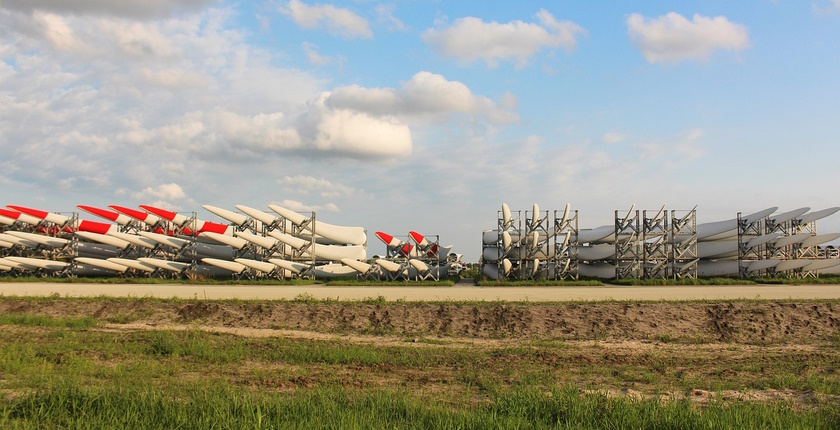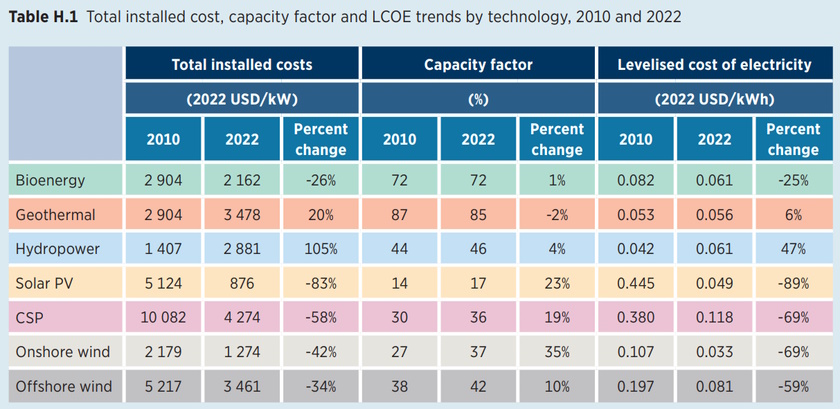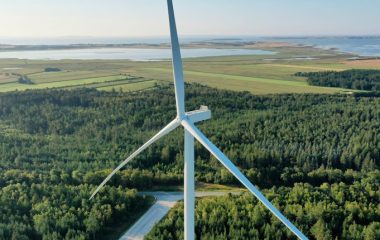
Photo: Wioletta from Pixaba
The fossil fuel price crisis has bolstered the competitiveness of renewable power, as around 86% or 187 GW of the capacity commissioned in 2022 had lower costs than fossil fuel–fired electricity, according to the International Renewable Energy Agency.
The fossil fuel price crisis was a telling reminder of the powerful economic benefits that renewable power can provide in terms of energy security, the International Renewable Energy Agency (IRENA) said in its report Renewable Power Generation Costs in 2022.
Due to soaring fossil fuel prices, the 2021-2022 period saw one of the largest improvements in the competitiveness of renewable power in the last two decades.
In 2010, the global weighted average levelized cost of electricity (LCOE) of onshore wind was 95% higher than the lowest fossil fuel–fired cost. In 2022, the global weighted average LCOE of new onshore wind projects was 52% lower than the cheapest fossil fuel technology.
Solar power fared even better.
Without the renewables, the economic disruption from the fossil fuel price shock in 2022 would have been much worse
The renewable source was 710% more expensive than the cheapest fossil fuel–fired solution in 2010. But driven by a spectacular decline in costs, last year it was 29% below the cheapest fossil fuel solution, according to the report.

Without the deployment of renewables over the last two decades, the economic disruption from the fossil fuel price shock in 2022 would have been much worse and possibly beyond many governments’ ability to soften with public funding, the global organization said.
Director-General Francesco La Camera said IRENA considers 2022 to be a veritable turning point in the deployment of renewables, arguing that their competitiveness has never been greater despite the lingering commodity and equipment cost inflation around the world.
There is no time for a new energy system to evolve gradually as was the case for fossil fuels
The business case for renewables is compelling, but the world must add 1,000 GW of renewable power annually on average every year until 2030 to keep 1.5 Celsius within reach, or more than three times 2022 levels, he stressed.
“There is no time for a new energy system to evolve gradually as was the case for fossil fuels. In preparation for the COP28 in Dubai later this year, the report shows once again that with renewables, countries have the best climate solution at hand to raise ambition and take actions in a cost-competitive way,” La Camera asserted.
In 2022, the renewable electricity capacity deployed since 2000 saved an estimated USD 521 billion in fuel costs in the electricity sector. Outside the Organisation for Economic Co-operation and Development, OECD, just the savings over the lifetime of the 2022 capacity additions will come in at as much as USD 580 billion.
In addition to the direct cost reduction, substantial economic benefits are expected from reducing CO2 emissions and local air pollutants, IRENA pointed out.
China was the key driver of the global decline in costs for solar PV, onshore wind

The global weighted average cost of electricity from last year’s additions fell across the board: in utility-scale photovoltaics, onshore wind, concentrated solar power or CSP bioenergy and geothermal energy.
China was the key driver for the solar power and onshore wind sectors, with other markets experiencing a much more heterogeneous set of outcomes that saw costs increase in many major markets, the report reads.
Looking at the new onshore wind facilities, the global weighted average LCOE fell by 5% in 2022 to USD 0.033 per kWh. For utility-scale PV projects, the measure decreased by 3% year-on-year to USD 0.049 per kWh.
On the other hand, the yardstick pointed 2% higher in the offshore wind segment – USD 0.081 per kWh.









Be the first one to comment on this article.